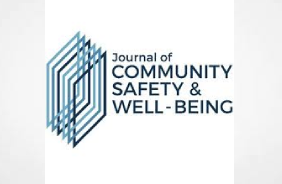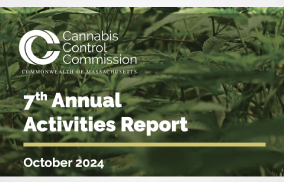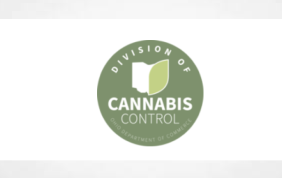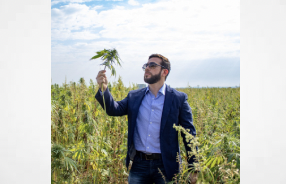Well spotted by Lex Pelger
You can read all his other amazing discoveries here. https://www.cannabinoidsandthepeople.whitewhalecreations.com/
DOI: 10.35502/jcswb.380
Abstract
This article presents a qualitative study of the impacts of cannabis legalization on organized crime in two of Canada’s largest provinces – Ontario and British Columbia. Utilizing a modified snowball sampling methodology, we conducted semi-structured interviews with 23 subject matter experts in law enforcement, journalism, law, public service, and the private sector. Our findings are complex and reflect a sophisticated, rational response by organized crime to a key legislative event. First, Health Canada’s personal/designated production registrations remain in place, which since 2001 have played a crucial role for allowing some patients access to medical cannabis. However, according to nearly every law enforcement officer interviewed, criminal entities continue to abuse this unique system by obtaining licences under false premises and diverting surplus product into the illicit market. Second, while the domestic market for illicit cannabis has likely declined, many interviewees claimed that organized crime groups adjusted operations by maintaining production levels and diverting shipments into the United States, and also by exploiting relationships with some Indigenous communities. This has contributed to deteriorating public health and safety outcomes within some Indigenous communities. Finally, we registered the belief of many interviewees that the most sophisticated criminal groups have begun shifting attention toward opiate production and distribution – potentially in response to both a smaller domestic market for cannabis, and also the skyrocketing demand for opioids. Our results reflect the unique character of Canadian geography, institutions and electoral politics, notably close proximity to the United States, federal-provincial division of powers, the evolving legacy of colonialism, and a unique series of legal precedents.
Main Text
INTRODUCTION
On 17 October 2018, Canada took the momentous step of fully legalizing recreational cannabis. The Cannabis Act gave Canadians the ability to possess up to 30 g of cannabis product, and purchase the same at provincially licensed retailers (Department of Justice Canada, 2021). The purpose of this study is to assess how cannabis legalization has impacted organized crime groups (OCGs) with Canadian operations in two Canadian provinces, and by extension their insidious impacts on public safety and public health. Our intent is to further the body of evidence on OCGs’ response to an important legislative milestone in Canada, not provide a comprehensive and exhaustive account.
Legalization of recreational cannabis emerged as a leading platform commitment made during the 2015 Canadian Federal Election by the Liberal Party. After the latter’s victory, it became central to the government’s legislative agenda, with three notable policy objectives: keeping cannabis out of the hands of youth, protecting public safety by allowing adults access to legal cannabis, and keeping profits out of the hands of criminals (Department of Justice Canada, 2021). To our knowledge, this study is the first to qualitatively assess the effectiveness of Canada’s policy in achieving the third cited objective – keeping profits out of the hands of criminals. It thus provides a valuable benchmark for the public and policymakers alike as the Cannabis Act undergoes its periodic mandatory review process (Health Canada, 2023a).
Consistent with the division of powers established in the Canada’s Constitution Act (1867), the federal government oversees licensing and regulation of cannabis producers, marketing, medical cannabis, and matters related to criminal justice. Contrastingly, provincial governments oversee aspects concerning distribution and retail of cannabis (Alati, 2022). In this respect, we begin to contemplate the institutional origins of resource allocation decisions, and their impacts upon illicit economies. Work by Obradovic (2021) is indispensable for connecting different outcomes of cannabis legalization across Colorado, Washington, and Uruguay to the specific dynamics of reform and structure of government in each jurisdiction. Similarly, our paper seeks to draw connections between the observed behaviours of organized crime and Canada’s unique institutional and geographic arrangements.
Illicit economies do not operate in isolation, nor do fundamental laws of economics cease to apply to illicit entrepreneurs (Fiorentini, 1997; Fiorentini & Peltzman, 1997; Polo, 1997). Contemporary studies of organized crime emphasize the tenacity of entrepreneurs to harness the forces of globalization to expand operations and exploit comparative advantages and lower monitoring costs in free-trade zones and border jurisdictions (Holden, 2017). Research suggests multiple reasons for the illicit market’s persistence: lower costs and easier access (Hathaway et al., 2021), convenience (Goodman et al., 2022), and higher labelled potency (Mahamad et al., 2020). Mirroring the legitimate economy, the transnational nature of modern organized crime encourages aggressive cost reductions and provision of goods and services at attractive price points, imposing great costs on societies and law enforcement.
In Canada, the presence of a long, undefended border and several Indigenous communities with unique jurisdictional heritage, stemming from Canada’s history of colonialism, has been posited to further create an environment conducive to illicit cross-border smuggling (Jamieson, 1999). Our results and discussion have been framed in a manner consistent with established literature on the institutional and geographic origins of comparative advantage, the economics of organized crime, and its evolving transnational character.
METHODS
The study employs a qualitative, modified snowball sampling methodology (Statistics Canada, 2021). To capture a more authentic portrait of the impacts of cannabis legalization on OCGs, we zero-in on two of Canada’s largest provinces, Ontario and British Columbia (BC). In two instances, our sampling process led us to out-of-province individuals whom we interviewed for their valuable expertise on cannabis legalization in Ontario and BC. While we remain optimistic about the prospects of generalizing these results across Canada, the heterogeneity of provincial approaches to cannabis legalization (Alati, 2022; Cunningham, 2021) suggests interpolating results with some measure of caution.
An exhaustive list of stakeholder groups was compiled for inclusion, consisting of academia, government, journalism, Indigenous groups, law enforcement, and private sector stakeholders. While our sample contains leaders within each field, we placed an emphasis on law enforcement as the stakeholders operating closest to organized crime. From these high-level categories, lists of organizations and individuals were identified for contact using open-source search techniques. Specific individuals were invited to complete interviews based on the researcher’s collective assessment of various factors such as their organization’s mandate, or the significance of a community according to size and geographic location. Our academic supervisor, possessing word-leading expertise in the field of illicit economies and transnational organized crime, also played a critical role by providing advice and facilitating introductions with subject matter experts. All participants were provided a written overview of the study and confirmed their informed consent before the interview, either in writing or verbally. The study was conducted in partial fulfilment of the authors’ degree requirements for the Master’s of Global Affairs program within the Munk School of Global Affairs & Public Policy at the University of Toronto, and was granted an exemption from requiring ethics approval as it was completed within the confines of supervised academic coursework. Research was closely monitored by faculty members and strict procedures were followed regarding obtaining informed consent of all participants and maintaining their anonymity.
Semi-structured interviews were conducted both in-person and virtually, for durations lasting between 60 and 90 minutes. Participants were asked a common set of high-level questions regarding the behaviour of organized crime pre- and post-cannabis legalization. Additional questions were provided to each interviewee dependent upon their unique background. Finally, all participants were asked to provide recommendations for individuals to include as additional study participants. We justify our use of the snowball sampling methodology for “its cultural competence and the inherent trust it engenders among potential participants” (Sadler et al., 2010). As suggested by Sadler et al. (2010), it is also an appropriate, time- and cost-effective methodology given the large number of potential participants under consideration, relative to the smaller and harder to reach subset of individuals possessing genuine familiarity with our research questions. Leveraging the networks of previous participants was crucial to access key individuals especially in law enforcement, where contact details and identities may be withheld for reasons of personal safety. In accordance with best practice, the identities of participants are withheld to protect personal and professional security (Naderifar et al., 2017). The sampling process was continued until representation of at least one informant had been achieved across all entities and professional categories identified during the initial stakeholder mapping.
The principal contribution of our study emerges from the results of 21 qualitative, semi-structured interviews completed with 23 participants, between February 2023 and April 2023. Approximately 50% of our sample consisted of law enforcement officers, with the remainder roughly evenly drawn from academia, journalism, public service (both provincial and federal), law, and the private sector. Twenty-five percent of the interviewees are from BC, 65% from Ontario, and 10% elsewhere. Approximately 50% of the sample was uncovered via recommendations of previous study participants, while 50% were recruited directly by the researchers. Fifteen percent of the interviewees were members of Indigenous communities. Interview notes and transcripts were coded on a common spreadsheet to facilitate identification of key modalities by which OCGs were impacted by cannabis legalization. Features of the legalization process in Canada, Ontario, and BC (the independent variables) were distinguished from changes in OCG behaviour (the dependent variables) during the coding procedure.
RESULTS
This section is prefaced by noting that we did not observe substantial divergences in the results or perspectives of interviewees from Ontario and BC. The below themes were equally common across stakeholders from each province. This may have emerged due to the federally administered nature of key programs from Health Canada, the presence of many Indigenous communities across Canada that continue to experience fallout from the legacy of colonialism, and the proximity of both provinces to the United States.
Ongoing Abuse of Health Canada’s Personal/Designated Production Registrations
















